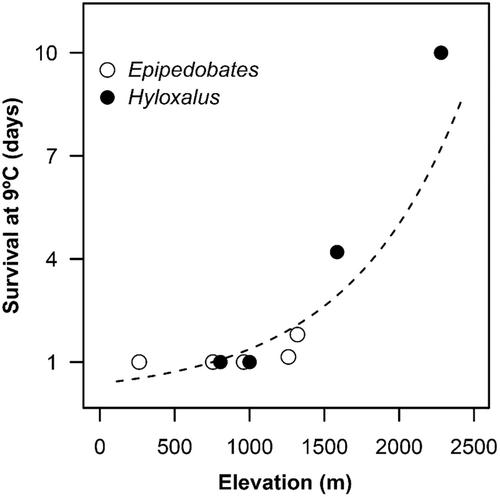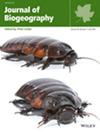We investigated the relationship between thermal physiology, elevational distribution and thermal stress among nine closely related dendrobatid frogs during their aquatic stage by employing an integrated approach, combining thermal physiology, environmental temperature modelling and predictive assessments of current and future exposure to thermal variation.
Ecuador.
Amphibians; Anura, Dendrobatidae, Epipedobates, Hyloxalus.
We determined the thermal performance curves (TPCs) of larval growth for each species and modelled the thermal variation in contrasting aquatic larval environments for both present and future times. This allowed us to estimate the expected elevational distributions and forecast periods of exposure to stressful temperatures that inhibit larval growth due to elevation and global warming.
We found significant correlations between optimum temperature (Topt), 50% maximum performance temperature (maxB50), 50% minimum performance temperature (minB50) and cold resistance (survival at 9°C) with the current elevational distributions. However, thermal physiology predicted lower than observed distributions for high-elevation dendrobatids and higher than observed maximum elevations for lowland species. Nonetheless, our models predicted that low thermal variability habitats (i.e. streams and deep permanent ponds) can buffer the future temperature increase for all taxa, even when considering the most extreme scenario. In contrast, all species within high thermal variation habitats (open forest temporary ponds) are expected to experience stressful temperatures under present conditions.
The findings indicate that thermal physiology may not be a limiting factor for dendrobatid frog species' ranges in this equatorial mountain gradient. Highland species may need to adapt to suboptimal performance, while some lowland species could occupy higher elevations. This study emphasizes the importance of habitat buffering to mitigate thermal stress in the face of climate change for amphibians in tropical mountains.



